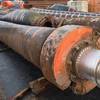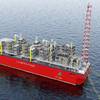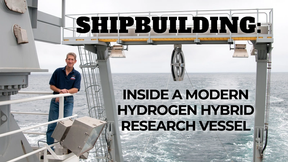For as long as there has been a need to transport cargo there has been a maritime industry. Throughout that history both owners and mariners have worked to devise ways of saving costs, making faster transits, and carrying more cargo.
In 1819 the Steam Ship Savannah made maritime history by being the first steamship to cross the Atlantic Ocean, sounding eight bells for the traditional cargo carrying tall ship. Although that eight bell sounded for quite some time, the future of shipping arrived with Savannah.
In 1911 M.S. Selandia, widely recognized as the first oceangoing diesel powered ship, was constructed and shortly thereafter began making her transit Copenhagen to Thailand. With the ushering in of the diesel engine, the Steamship Historical Society was created in 1935 to document the passing importance of the Steamship.
Today we sail with ships operating with diesel engines, gas turbines and even nuclear reactors for the military. No one has given a second though to sail for quite some time. Before the oil markets tanked about three years ago, fuel conservation was of priority number one in the maritime sector, and technologies such as air bubble lubrication, sky kites and auxiliary sails were explored. But to date, these ideas have not materialized into the mainstream shipping industry. To be clear, these were not to be used as the primary source of propulsion, rather a supplemental source of power to help save fuel in a market where fuel prices were rising with great pace and regularity. With the new Low Sulphur Fuel and NOX and SOX regulations we may see these technologies have a resurgence of interest, but that is a topic for another time. The most exciting part of working for a registry is the variety of interesting vessel owners with ideas that you meet. At the Vanuatu registry we are proud to talk about one of our more interesting niches in the industry: sailing vessels. We are not talking about the Tall Ship Association Sailing vessels that one might see at an Ops Sail, or at Mystic Seaport. We are talking about working, cargo and passenger carrying sailing vessels.
When the term ‘sailing vessels’ is mentioned, today thoughts turn to Pirates of the Caribbean or a sunset cruise. Many in the industry forget that before the IMO, before regulations regarding greenhouse emissions and navigation instrument installation, sailing vessels were delivering cargo for centuries.
One hundred fourteen tons or 201 barrels at 225 liters of rum, or 1,450 bags weighing 69 kilos each of coffee. About 7 TEUs worth of cargo. I asked my local high end coffee chain here in downtown Manhattan how much coffee they went through a typical day. The answer was around 60 pounds. With 21 shops, a ship load could supply this chain for almost half a year. This could also supply another very popular chain of coffee shops around the entire island of Manhattan for several days. This is the cargo carrying capacity of the Vanuatu flagged sailing vessel, Avontuur. So let us make a comparison.
According to the IMO, international shipping is the cause of approximately 796 million tonnes of CO2 emissions, which is about 2.2 percent of worldwide emissions as of 2012. As everyone involved in the industry is aware, there is a need to reduce NOX and SOX emissions over the next few years. A sailing vessel emits no CO2, SOX, or NOX gasses. When properly equipped with solar and wind turbine battery chargers and generators, systems can be run in an environmentally responsible manner.
From a regulatory perspective this ship presented significant challenges. To be clear, safety of the seafarer is always of utmost concern. Having sailed a number of years, and teaching mariners to this day, safety is the word. A key question is balancing modern safety standards on a vessel built on ancient standards. In order for the vessel to carry cargo we could not consider the vessel primitive build, but she is also non-SOLAS, being under 500 GT. IACS 99 Recommendations came in handy as well as an application of the Caribbean Cargo Ship Safety Code. Luckily we were able to find an old set of Class rules from 100 years ago and that provided some excellent guidance. But what was most helpful was something that mariners to this day have, and that is our experience and the American Merchant Seaman’s Manual. Making the vessel more modern as far as safety was of concern to us. It was not so long ago that the HMS Bounty went down with a fair amount of modern equipment on board. It is a benefit that the current generation has a desire for constant communication, so convincing a vessel owner to carry a satellite phone, VHF radio and means for email was not an argument, rather already in place.
Another concern was the credentials of the seafarers. STCW does not cover sailing vessels, in fact the United States only issues Auxillary sail licenses, insinuating that the vessel will primarily be propelled by an engine. We were lucky to have the owner of the vessel, Ben Cornelius, who worked with us to provide mariners with a background in tall ships and to have an apprenticeship program for training new hires. The use of sailing vessels is not unprecedented in today’s maritime environment. The Sailing Vessel Rauch is currently working to support Medical aid programs in Papau New Guineau for the YWAM (Youth with a Mission) ships program. The Sailing Vessel Rembrant Van Rjin is operating as a passenger vessel in Arctic waters. The Picton Castle is in Canada, training people in the art of traditional sailing. In fact this concept of returning sailing vessels to service is the basis of the Fairtransport Company out of the Netherlands, whose vessels are sail powered and carry cargo.
One does not have to look too far to see that Rolls-Royce is working diligently to change shipping as we know it by pushing toward autonomous ships. In one article it was forecast that autonomous ships will be crossing the oceans by 2020. Will that happen, I do not know, but I do know there will be the need for a lot of regulatory changes to make that to work. With much attention paid to Ballast Water Technology, SOx, NOx, Emissions Control Areas and Vessel General Permits, mariners not being mariners anymore, rather computer technicians. But I think that there is a lesson to be learned in to holding on to our maritime tradition, not just out of nostalgia, but out of lessons to be learned to do business in a sustainable manner with the human element at the center, always.
The Author
Matthew Bonvento is the Senior Manager for Safety, Security, Regulatory, and Quality Compliance for Vanuatu Maritime Services Ltd. He is also a licensing instructor in Long Island. Holding a Masters in International Transportation Management, and an Unlimited Chief Officers License as well as a 1600 ton Master license.

















